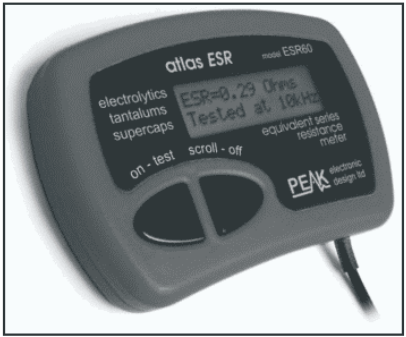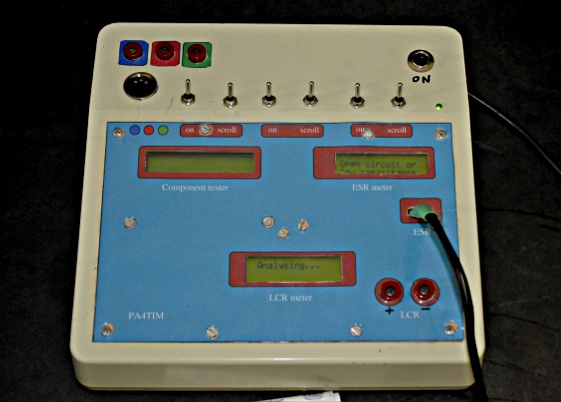I have three handy tools. A Peak Atlas semiconductor componenttester, a ESR60 ESR meter and a LCR40 LCR meter. You connect a dual or triple pin semiconductor to it and it tells you if it is OK, some parameters like hFE for transistors or leakage current. Nicest thing it tells you what component it is and which pins are what. Do not trust it blind. It does not know things like digital transistors and it can hold a dead part for some other part. But overall very handy.
The ESR meter also measures capacitance. The ESR function is a good one. It is very accurate but that is not very important. See my pages about ESR. I show there also the way it works. Capacitance measurement is not its strongest feature.
The LCR meter recognizes the component but it shows more digits as it has precision. It is not a real LCR meter in my opinion. A LCR meter should also measures Q and D. But it is handy for quick checks.
I had 3 problems with them:
– a 12V battery that last less as a year if you do not use the instruments.
– The clips from the LCR meter and component tester are not the best ones.
– They are small so I always loose them.
My solution was a reboxing job. They are now mains powered. Have better switches and I can use the probes I want. The ESR probes are good so I reused them.
The 3 bananajacks are for the component tester. That is why I used those colors around them. I placed them at the same distance as my Tek 576 curve tracer so that I can use the adapters. Besides that I mounted a Din socket. The trick is to push a pin of a good IC socket in the holes ans solder them. This can be tricky but if you pre-solder both parts and then push them together and then heat both it is easy.
The ESR meter draws 25mA, the rest 5 to 10mA so I used a small shielded transformer and a 7812.



